
Are you looking to enhance your garden with the captivating beauty of Celosia flowers? Welcome to the ultimate guide on Celosia care, designed to help you grow stunning, vibrant blooms effortlessly. These easy-to-maintain flowers, often known as cockscombs, promise a visual treat if you provide them with the right conditions. This comprehensive guide will not only make your Celosia care routine a breeze but also transform your garden into a colorful paradise. Let’s dive into the world of Celosia!
Introduction
Celosia, scientifically known as Celosia spp., is a perennial plant that thrives in USDA plant hardiness zones 10 and 11 throughout the year. With its diverse and beautiful colors, Celosia goes by various names, including cockscomb, feathered amaranth, wool flower, and red fox. Originating from South America, Africa, and Asia, this stunning flower is perfect for regions with warm, humid climates. With around 60 different species of Celosia worldwide, it’s no wonder this bloom is a favorite among garden enthusiasts. While it’s technically an edible flower, Celosia is predominantly grown for its ornamental value. Depending on the cultivar, mature Celosia plants generally reach heights of 6 inches to 3 feet.
Varieties of Celosia to Elevate Your Garden
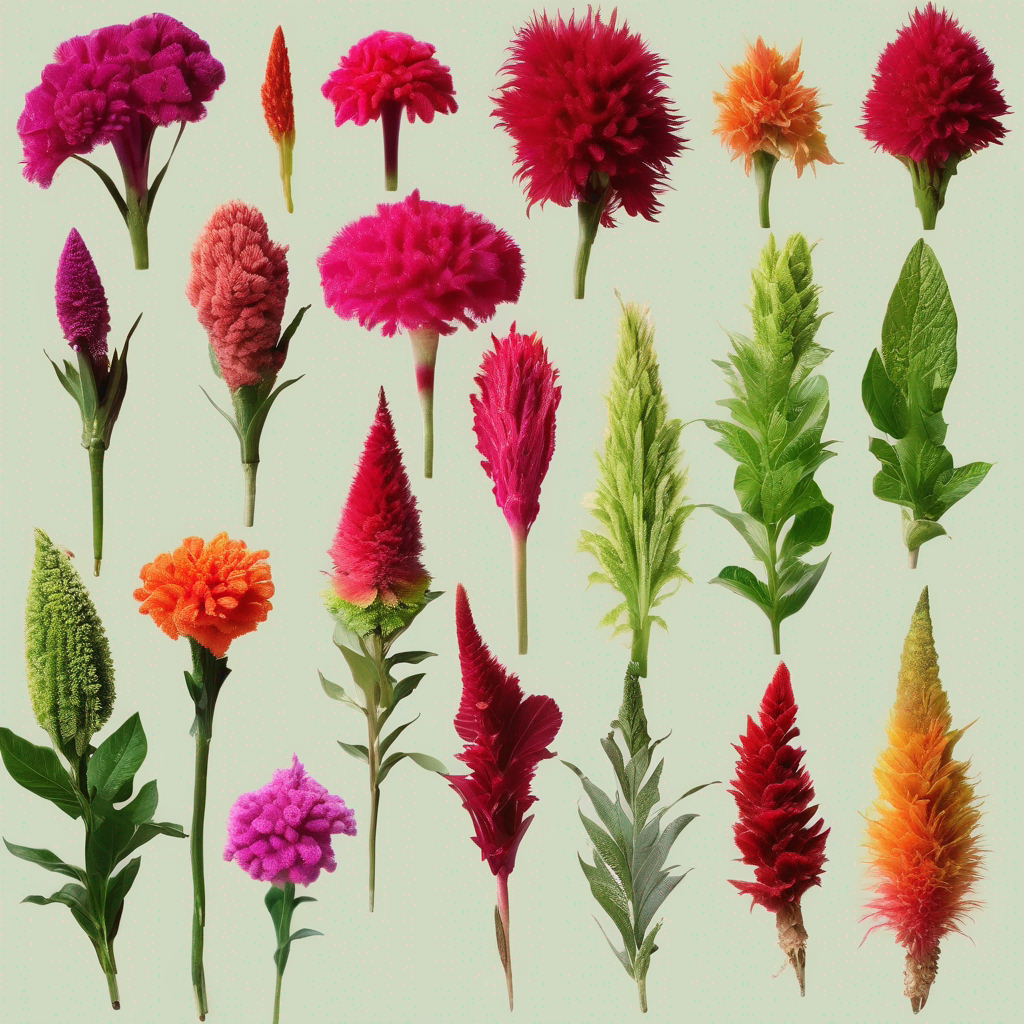
When it comes to Celosia, the world of gardening offers a kaleidoscope of choices. These striking flowers come in various shapes, colors, and sizes, making it easy to find the perfect Celosia variety to suit your garden’s aesthetic. Let’s explore some popular Celosia cultivars that can elevate your garden:
- Plume Celosia (Celosia argentea var. plumosa): These feathery, plume-like blooms are one of the most recognized Celosia varieties. Their vibrant, soft, and flame-shaped flower heads come in an array of colors, including red, pink, orange, and yellow. Plume Celosia adds a touch of elegance to your garden and looks stunning in both flower beds and cut flower arrangements.
- Crested Celosia (Celosia argentea var. cristata): Known for their unique, coral-shaped flower heads, Crested Celosia varieties make a bold statement in your garden. The blooms often have striking, multi-colored patterns and can resemble roosters’ combs, hence the common name “cockscomb.” These are sure to be conversation-starters in your garden.
- C. spicata (Wheat Celosia): Wheat Celosia stands out for its long, slender, and wheat-like flower spikes, which can be either upright or drooping. The blooms come in shades of red, pink, and purple, providing a dramatic and elegant appearance to your garden. They make a great choice for both fresh and dried flower arrangements.
- Dracula Celosia (Celosia argentea ‘Dracula’): This striking variety features unique, dark red and maroon flower heads with a dramatic, blood-red hue. The dark coloration makes it an exceptional choice for adding contrast and depth to your garden.
- Bombay Celosia (Celosia argentea ‘Bombay’): Bombay Celosia is prized for its intense and fiery red-orange flower plumes. They add a bold, tropical vibe to your garden, making it a perfect choice for those who want to make a vibrant statement with their floral displays.
- Flamingo Feathers (Celosia argentea ‘Flamingo Feathers’): As the name suggests, this variety sports distinctive, feathery, pink flower heads. The soft, feathery texture and delicate hue bring a touch of elegance to your garden. Flamingo Feathers Celosia is a favorite for cut flower arrangements.
- Fresh Look Celosia (Celosia argentea ‘Fresh Look’): Fresh Look Celosia is known for its compact, bushy growth and vibrant, eye-catching flower heads in shades like red and yellow. These varieties are perfect for containers and borders, and they’re easy to grow, making them an excellent choice for novice gardeners.
- Dragon’s Breath (Celosia ‘Dragon’s Breath’): This striking Celosia variety is known for its rich, deep red blooms. They add a touch of drama to your garden and create a visually captivating contrast with other, lighter-hued flowers.
- Kimono Celosia (Celosia ‘Kimono Mix’): The Kimono Celosia variety offers a mix of colors, including bright reds, oranges, and yellows. These fluffy flower heads are a fantastic addition to your garden, especially if you want a diverse palette of colors.
- Wheatfield Green (Celosia argentea ‘Wheatfield Green’): If you’re looking for an unusual twist on Celosia, Wheatfield Green features green blooms with a unique texture. These flowers are excellent for adding a pop of contrasting color to your garden and floral arrangements.
With these diverse Celosia varieties, you can create a garden that’s a visual delight. Whether you prefer the traditional plume Celosia or you’re eager to experiment with the eye-catching Dracula Celosia, there’s a perfect Celosia cultivar for your garden. Explore these options and let your garden thrive with the beauty of Celosia in various shapes and shades.
Celosia Care Guide
To achieve the best results with your Celosia, you’ll want to pay attention to the following aspects of care:
- Sunlight and Drainage
- Celosia thrives in at least 8 hours of direct sunlight daily. More sun exposure translates to better growth.
- Well-drained soil is crucial to prevent root rot. If your soil doesn’t drain well, consider adding perlite and a soil amendment to improve drainage.
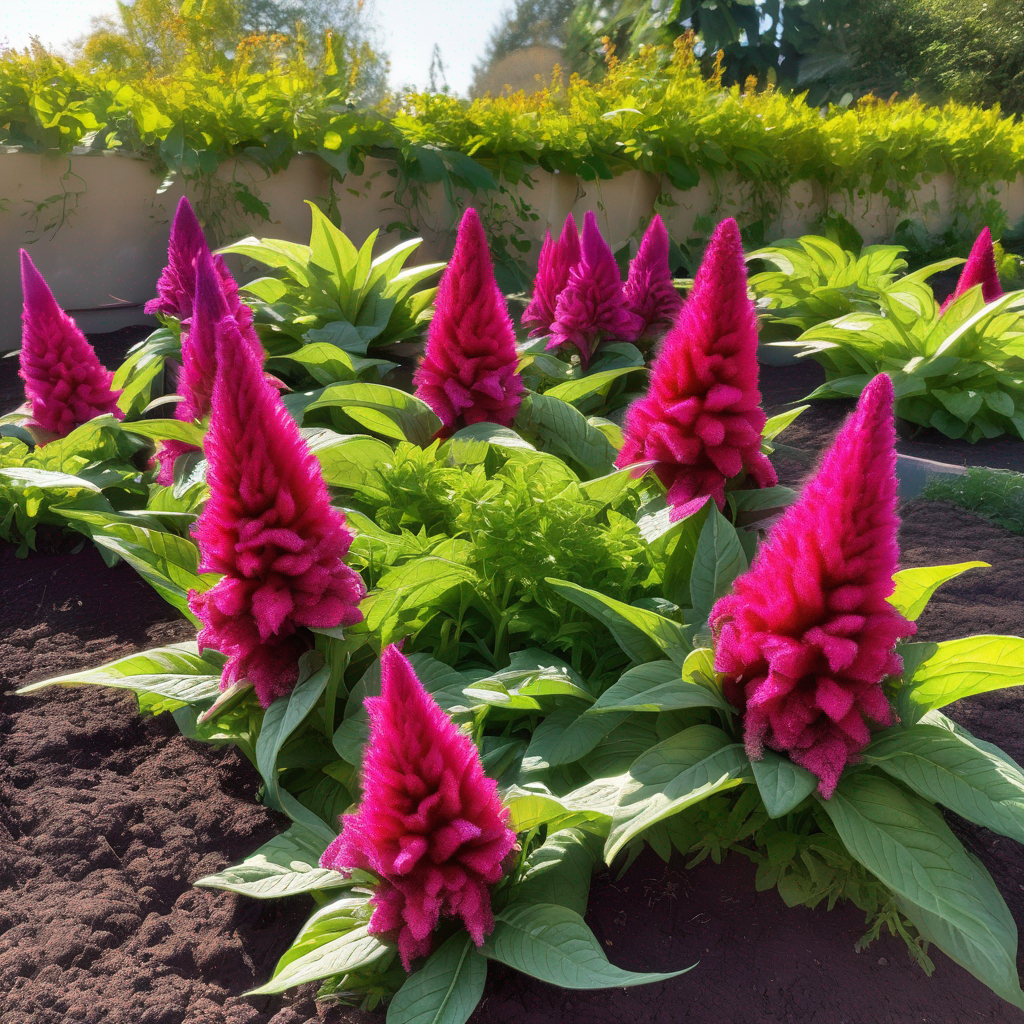
- Organic Ingredients and pH
- Optimal soil for Celosia contains ample organic matter and maintains a pH level between 6 and 6.5.
- Prepare the planting site by removing weeds and integrating organic matter into the soil during the fall. Materials like leaf fungus, peat, old cow dung, and compost are excellent for soil amendments. Spread 3-6 inches of organic matter over the soil and work it into the top 10-12 inches.

- Fertilization
- While Celosia often doesn’t require much fertilizer, you can use water-soluble fertilizers with a 3-1-2 ratio every two weeks if you notice slow growth.
- Once your Celosia starts flowering, switch to a 15-30-12 mixture to boost flower production.
- Flower Deadheading
- Removing faded or dead flowers encourages your Celosia plants to produce more blooms.
- This practice maintains the plant’s appearance and overall performance.
- Pinching back the stems as they grow will result in thicker growth.
- For taller Celosia varieties, like Fresh Look Red or Fresh Look Yellow, you can tie the flowers to stakes to prevent them from drooping.
- When the plant reaches a height of 8-12 inches, trim away any dead leaves and stems to support new growth.
- Use sanitized scissors to remove fading flowers, which promotes more blooms.
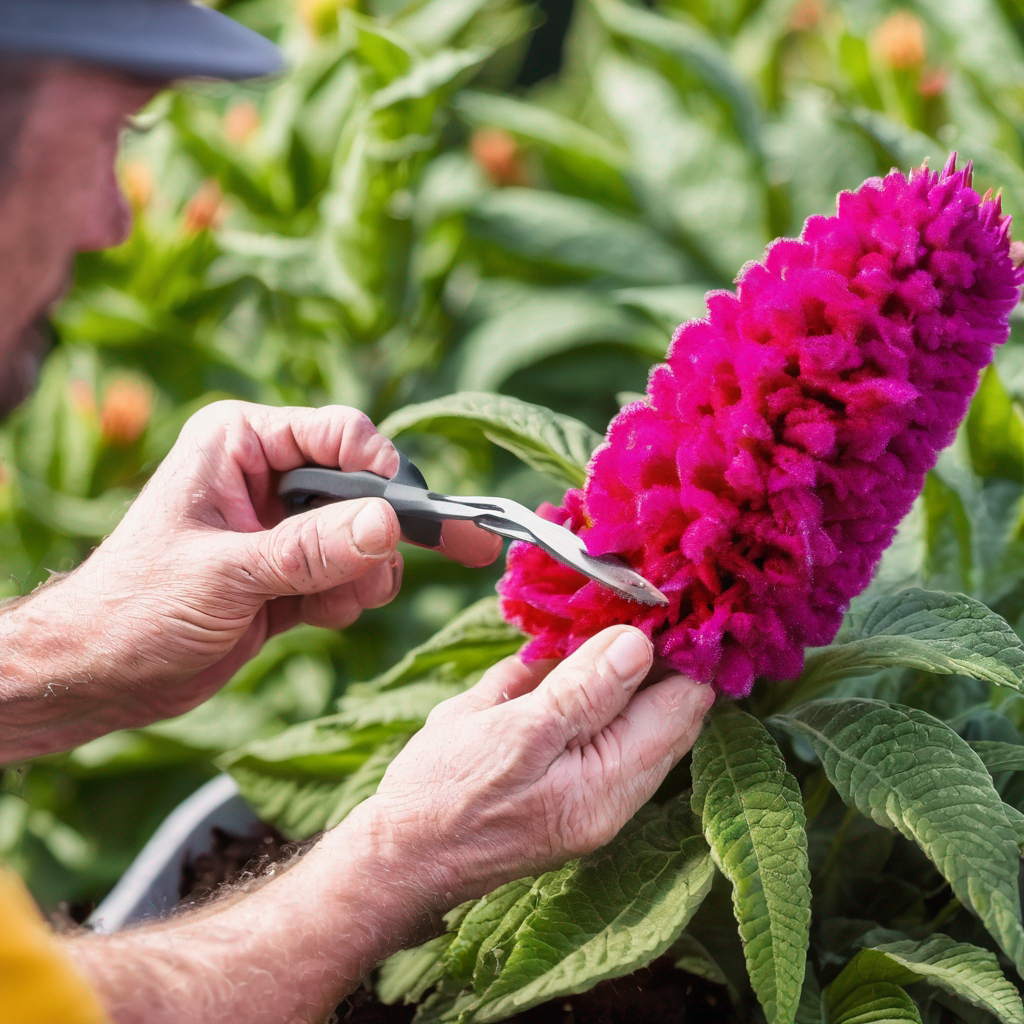
- Climate Care
- Celosia thrives in tropical climates, preferring warmth and humidity.
- If you’re in USDA hardiness zones 9-11, you’re in the right climate zone.
- To maintain moisture, consider sprinkling organic mulch over the soil daily and grouping your Celosia with other plants. This also helps prevent weed growth.
- For indoor pot gardening, ensure proper humidity by adding gravel and a little water. Store pots in a shallow tray.
- Pests and Diseases
- Celosia care is relatively straightforward because these plants are resistant to pests and diseases.
- Keep an eye out for potential diseases like root rot and leaf wilting or discoloration, often linked to poor soil drainage.
- Mold and powdery mildew can also affect leaf color and even harm the plant.
- Common pests include spider mites and aphids, which can be removed with a strong stream of water.
- To prevent powdery mildew and leaf spot, avoid overhead watering and use the bottom watering method to ensure even water distribution and proper drainage.
How to Plant Celosia
In addition to proper Celosia care, understanding how to plant these flowers is essential for their success. Follow these steps for a thriving Celosia garden:
- Get Quality Seedlings:
- Begin by purchasing Celosia seedlings from a nursery or florist.
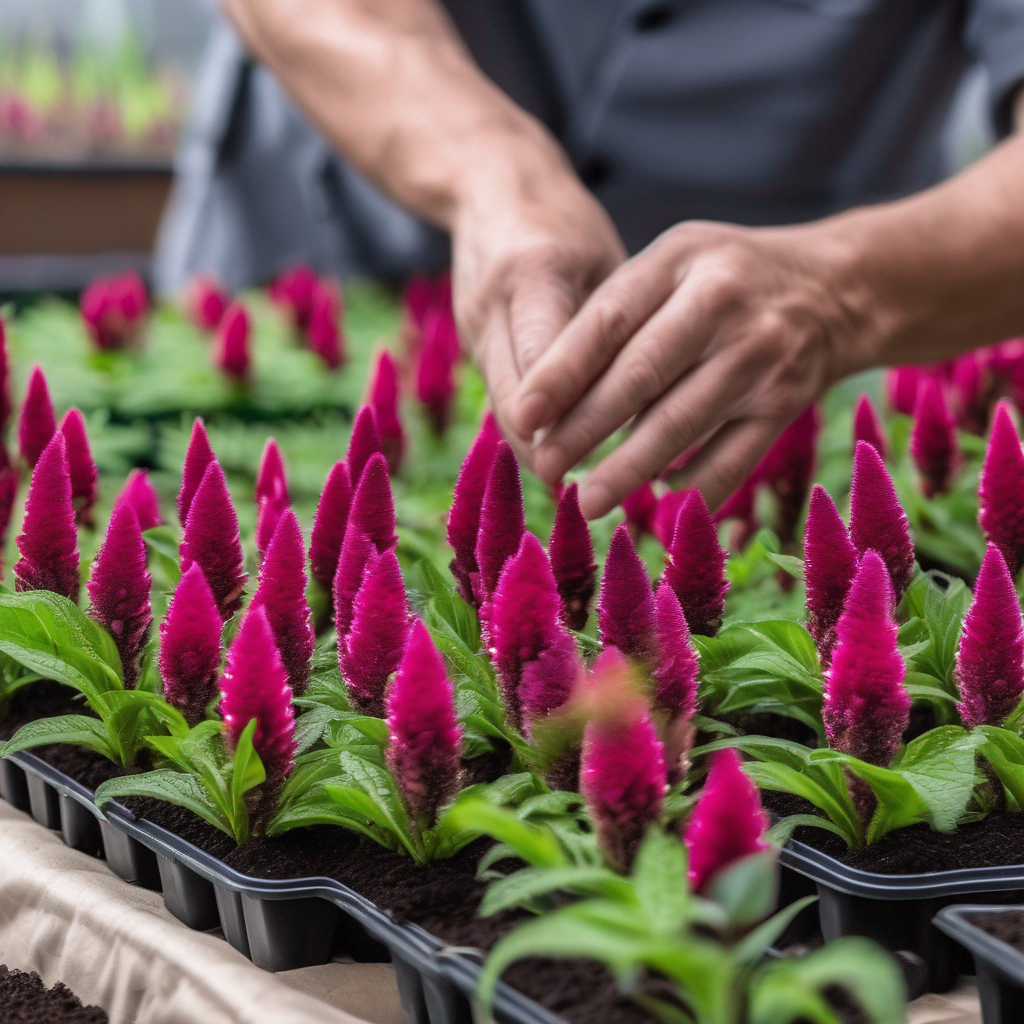
- Start with Indoor Germination:
- Plant your Celosia seedlings indoors about 4 to 6 weeks before the last frost.
- Maintain a temperature between 70-75°F and the right humidity for quicker germination.
- Transplanting:
- Once germination occurs, you can transplant your Celosia outdoors after the last frost.
- Optimal Sunlight:
- Choose a sunny location that provides at least 8 hours of sunlight daily.
- While Celosia can tolerate partial shade, full sun exposure yields the clearest and most vibrant blooms.
- Well-Drained Soil:
- Plant your Celosia in well-drained soil enriched with organic matter.
- Proper Watering:
- Water your Celosia every three to four times a week to prevent the soil from drying out entirely.
- Reduce watering frequency in the fall to about twice a week, and once a week in winter.
- Avoid overwatering to prevent waterlogged soil and root rot.
- Fertilize and Mulch:
- During spring and summer, provide a water-soluble fertilizer every 2-4 weeks to encourage growth.
- Consider adding a few inches of mulch to retain moisture and provide additional nutrients to the soil.
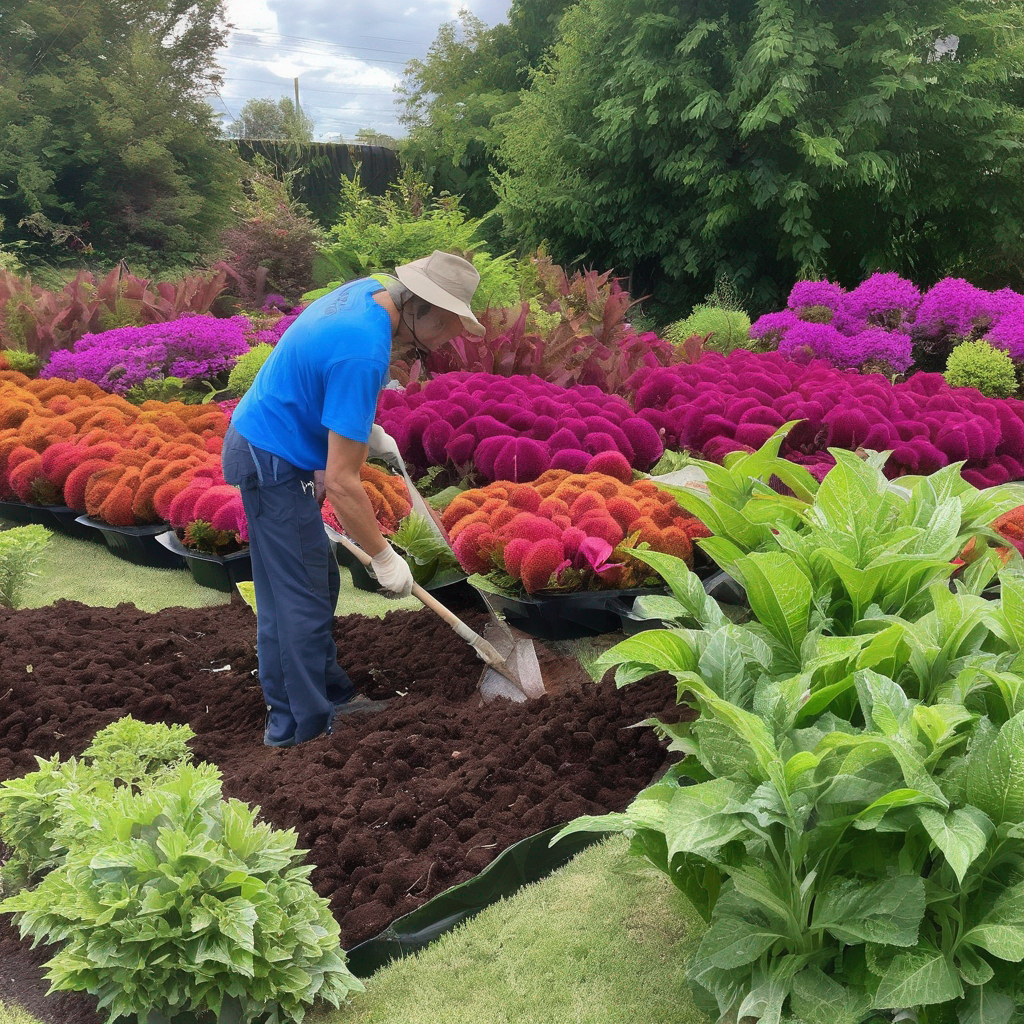
By following these planting and care guidelines, you can cultivate thriving Celosia plants and enjoy their striking beauty for years to come.
Conclusion
Growing lush and beautiful Celosia flowers is simpler than you might think. With the right soil, sunlight, and minimal maintenance, you can transform your garden into a vibrant haven of colors. These captivating blooms are not only visually stunning but also low-maintenance, making them an excellent choice for gardeners of all levels. Whether you’re aiming to beautify your garden or create stunning floral arrangements, Celosia is an ideal choice. Implement these tips, and your Celosia garden will flourish, providing enduring joy and visual delight season after season.

Cat-Friendly Gardening: Creating a Safe Haven for Your Feline Friends
Table of Contents Introduction Hey there, fellow feline enthusiasts! 🐾 Welcome to a space where your garden becomes not just a patch of green but

From Lilies to Sago Palms: Protect Your Cat from These 10 Toxic Plants
Table of Contents Introduction: Keeping Your Furry Friend Safe from Toxic Plants Hey there, fellow cat lovers! We all know our feline companions can be

Cat Nutrition 101: Decoding Labels & Essential Nutrients A-Z!
Table of Contents Introduction As a cat owner, you want nothing but the best for your furry feline friend. And that includes providing them with
